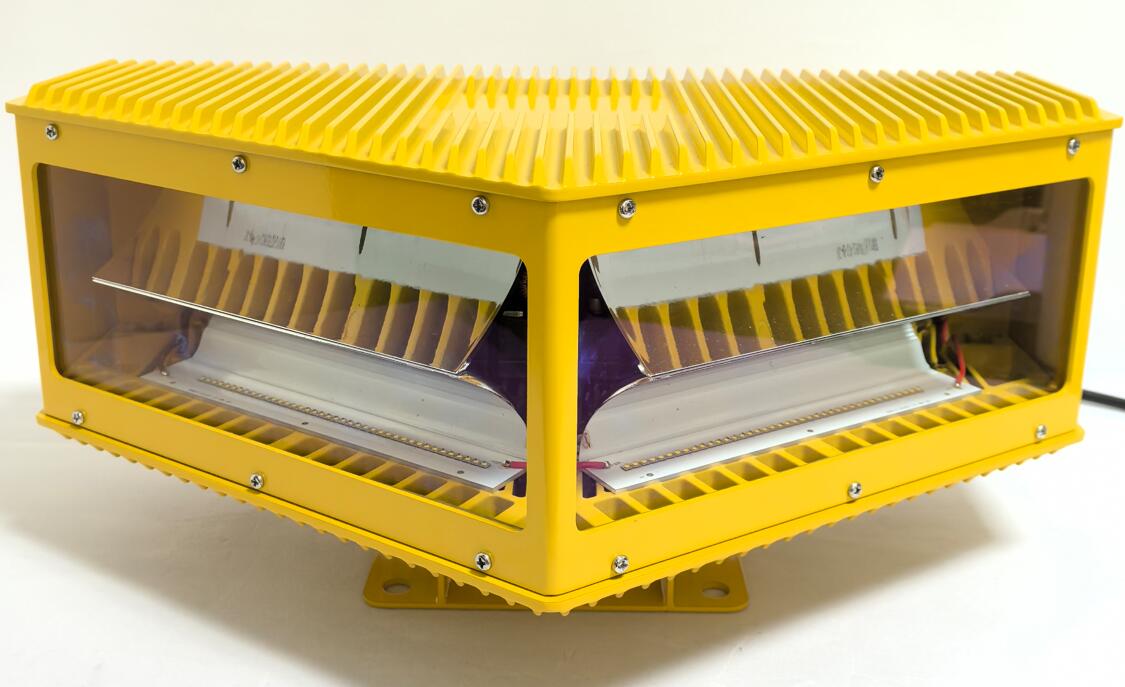Posted: 2025-05-09
Aviation light fixtures play a crucial role in ensuring the safety and efficiency of air travel. These specialized lighting systems guide pilots during takeoff, landing, and taxiing, while also improving visibility in low-light conditions. With advancements in technology, modern aviation light fixtures have become more durable, energy-efficient, and intelligent. This article explores the latest trends, applications, and benefits of these essential components in the aviation industry.
Types of Aviation Light Fixtures
1. Runway Edge Lights
Runway edge lights are among the most critical aviation light fixtures, marking the boundaries of runways to prevent aircraft from veering off course. These lights are typically white but may change to yellow near the runway’s end. Modern LED-based systems offer superior brightness and longevity compared to traditional incandescent bulbs.
2. Approach Lighting Systems (ALS)
Approach lighting systems assist pilots during the final descent by providing visual cues for alignment and distance. These aviation light fixtures often include a combination of steady and flashing lights, helping pilots maintain the correct glide path even in poor weather conditions.

3. Taxiway Lights
Taxiway lights guide aircraft from runways to terminals, ensuring safe ground movement. Blue in color, these aviation light fixtures help pilots navigate complex airport layouts, reducing the risk of collisions or wrong turns.
4. Obstruction Lights
To prevent collisions with tall structures, obstruction lights are installed on buildings, towers, and wind turbines near airports. These aviation light fixtures emit red or white flashes, alerting pilots to potential hazards.
| aviation light fixtures |
5. Beacon Lights
Beacon lights are mounted on airport control towers and rotating aircraft to enhance visibility. These high-intensity aviation light fixtures help identify an airport’s location from a distance, especially at night or in foggy conditions.
Technological Advancements in Aviation Light Fixtures
1. LED Adoption
Light Emitting Diode (LED) technology has revolutionized aviation light fixtures by offering greater energy efficiency, longer lifespans, and reduced maintenance costs. LEDs also provide consistent illumination, which is crucial for pilot safety.
2. Smart Lighting Systems
Modern aviation light fixtures now incorporate smart controls, allowing for remote monitoring and automated adjustments. These systems can detect failures in real time and optimize brightness based on environmental conditions.
3. Solar-Powered Solutions
Some airports are adopting solar-powered aviation light fixtures to reduce energy consumption and carbon footprints. These systems are particularly useful in remote locations where grid power is unreliable.
| aviation light fixture |
4. Enhanced Durability
Aviation light fixtures must withstand extreme weather, UV exposure, and mechanical stress. Advances in materials, such as polycarbonate lenses and corrosion-resistant alloys, have improved their resilience.
Regulatory Standards and Compliance
Aviation light fixtures must adhere to strict international standards set by organizations like the International Civil Aviation Organization (ICAO) and the Federal Aviation Administration (FAA). These regulations ensure uniformity in color, intensity, and placement, minimizing confusion for pilots worldwide.
Future Trends in Aviation Light Fixtures
The future of aviation light fixtures lies in further automation and integration with air traffic management systems. Innovations such as adaptive lighting, which adjusts based on aircraft movement, and wireless power transmission are being explored. Additionally, the use of AI for predictive maintenance could further enhance reliability.
Aviation light fixtures are indispensable for safe and efficient air travel. With ongoing advancements in LED technology, smart controls, and sustainable power solutions, these systems continue to evolve. As airports worldwide modernize their infrastructure, the role of aviation light fixtures will only grow in importance, ensuring safer skies for years to come.